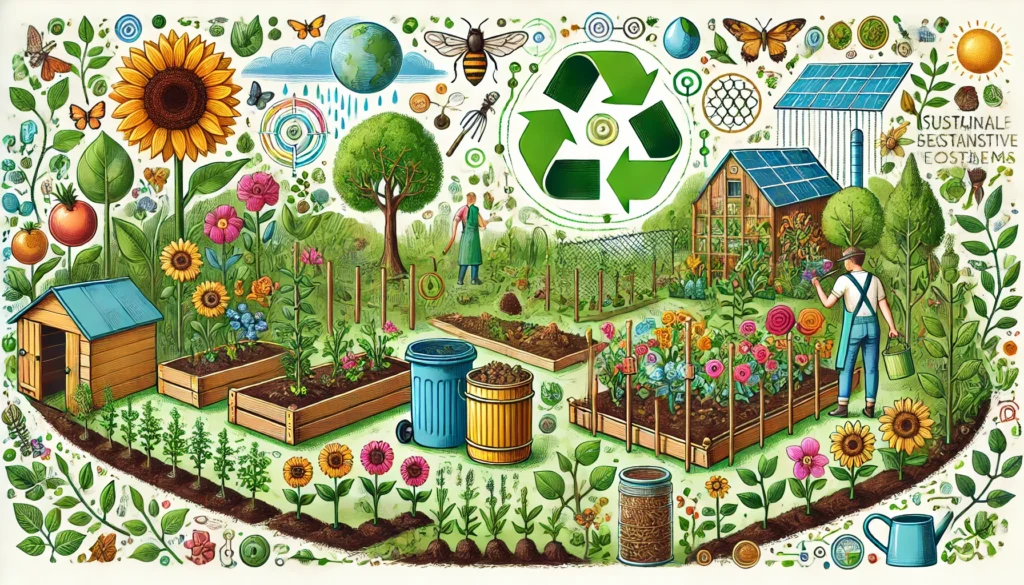As awareness of environmental issues grows, more people are turning to regenerative gardening practices to create sustainable ecosystems in their own backyards. Regenerative gardening goes beyond traditional methods, focusing on restoring and improving the health of the soil, plants, and the environment as a whole. Whether you’re a seasoned gardener or a beginner, this guide will introduce you to regenerative gardening practices that will help you build a healthy, thriving garden that not only benefits your plants but also supports the broader ecosystem.
What Is Regenerative Gardening?
Regenerative gardening is a holistic approach to gardening that prioritizes the restoration of ecosystems. Unlike conventional gardening, which often relies on synthetic fertilizers and chemicals, regenerative gardening focuses on working with nature rather than against it. The goal is to enhance the natural processes that allow soil, plants, and wildlife to thrive while reducing the negative impact of human activity on the environment.
Key Principles of Regenerative Gardening:
- Soil health: Building and maintaining healthy soil is the foundation of regenerative gardening. Healthy soil supports plant growth, stores carbon, and retains water, reducing the need for external inputs.
- Biodiversity: Encouraging a variety of plants, insects, and wildlife in your garden helps create a balanced ecosystem where everything works together in harmony.
- Water conservation: Using water wisely and implementing methods that retain moisture in the soil helps reduce the need for irrigation and supports healthy plant growth.
- Minimal disturbance: Avoiding practices like tilling, which disrupts soil structure and the beneficial organisms within it, promotes long-term soil health.
Why Regenerative Gardening Matters
Regenerative gardening is not just about growing beautiful plants—it’s about creating a positive environmental impact. By practicing regenerative methods, you can:
- Improve soil health: Healthy soil is full of organic matter and beneficial organisms that support plant growth and store carbon, helping to combat climate change.
- Promote biodiversity: A diverse range of plants and wildlife strengthens your garden’s ecosystem, making it more resilient to pests and diseases.
- Conserve water: Water-efficient gardening practices help reduce water consumption, especially in regions prone to drought.
- Reduce chemical use: By building healthy soil and promoting biodiversity, you can reduce or eliminate the need for synthetic fertilizers and pesticides, benefiting both your plants and the environment.
Regenerative Gardening Practices
1. Build Healthy Soil
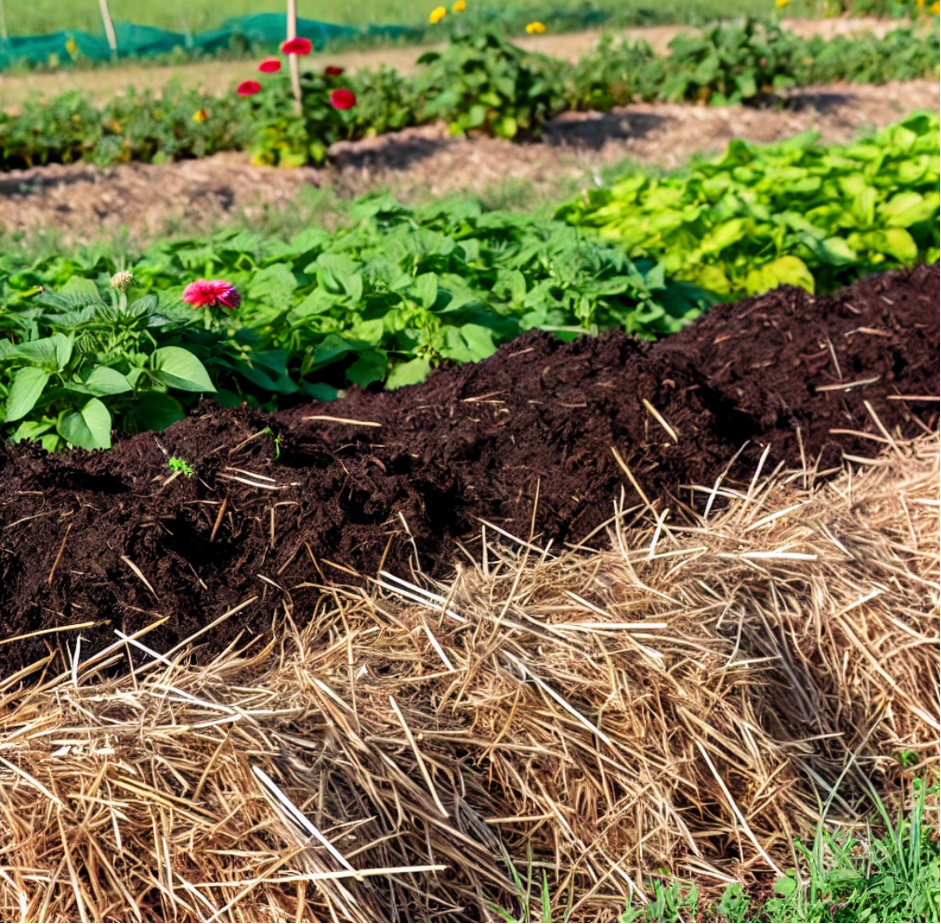
Soil is the foundation of a healthy garden, and regenerative gardening focuses on improving soil health over time. One of the key ways to do this is through the addition of organic matter, such as compost, mulch, and cover crops. Organic matter improves the soil structure, helps retain moisture, and provides nutrients to plants.
How to Build Healthy Soil:
- Add compost: Regularly incorporate compost into your garden beds to add nutrients and organic matter. Compost improves soil texture and enhances its ability to hold water.
- Use mulch: Apply organic mulch, such as wood chips or straw, around your plants to help retain moisture, suppress weeds, and improve soil fertility as it decomposes.
- Plant cover crops: Cover crops like clover or rye help prevent erosion, suppress weeds, and add nitrogen back into the soil when they decompose.
2. Practice No-Till Gardening
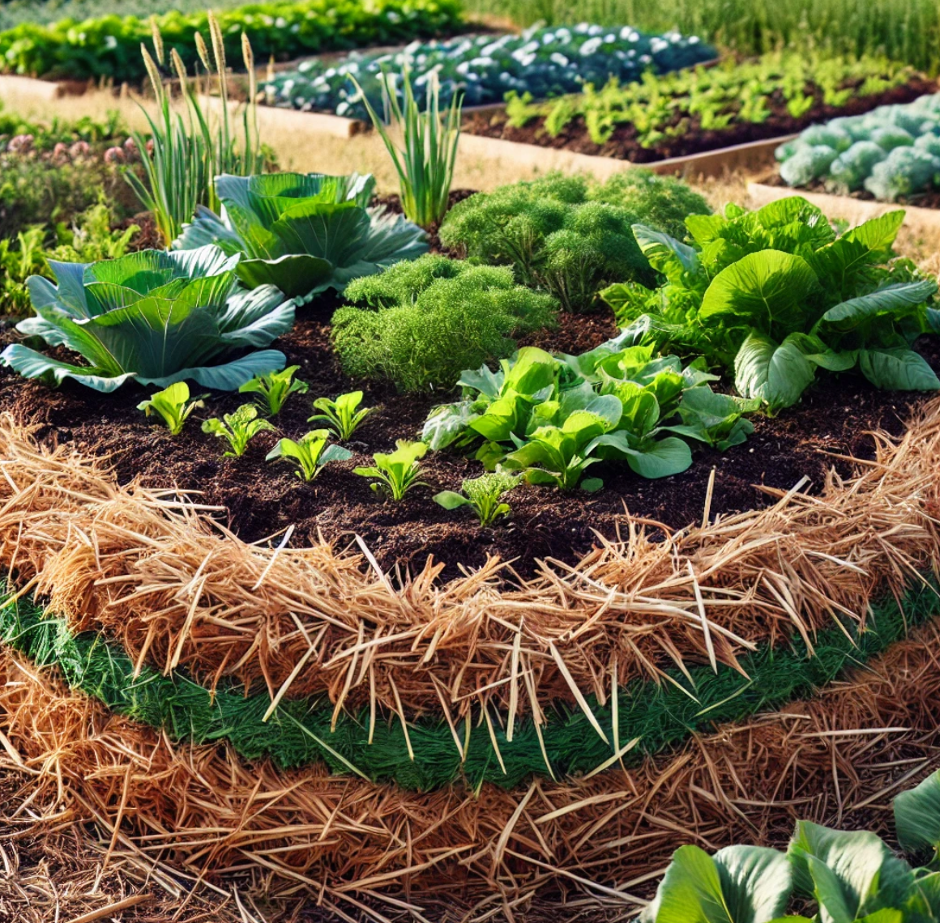
Tilling may seem like a common gardening practice, but it can actually harm the soil by disrupting its structure and killing beneficial microorganisms. No-till gardening minimizes soil disturbance, allowing the natural ecosystems within the soil to thrive.
How to Implement No-Till Gardening:
- Layer organic matter: Instead of tilling, add layers of organic matter like compost, leaves, or straw to your garden beds. This will improve the soil over time without disturbing its structure.
- Use cover crops: Plant cover crops in the off-season to protect and improve your soil without the need for tilling.
3. Encourage Biodiversity

A regenerative garden thrives on biodiversity. By incorporating a wide range of plants, you create a more resilient ecosystem that can better withstand pests, diseases, and environmental stressors.
Tips for Encouraging Biodiversity:
- Plant a variety of species: Avoid monocultures by planting a diverse range of plants, including perennials, annuals, and native species.
- Create habitats for wildlife: Birds, insects, and other wildlife play important roles in a healthy ecosystem. Incorporate birdhouses, water features, and native plants to attract beneficial wildlife.
- Companion planting: Grow plants that support each other by deterring pests, improving soil health, or attracting pollinators. For example, planting marigolds near tomatoes can help deter pests.
4. Water Conservation Techniques
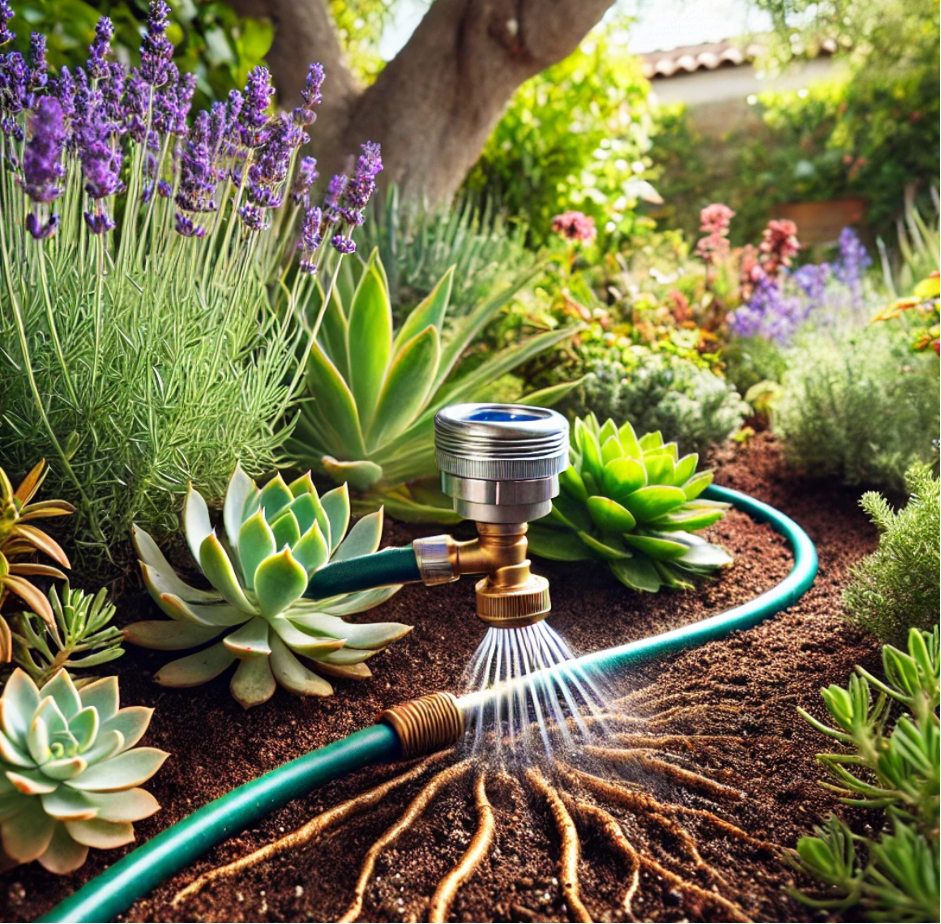
Water is a precious resource, and regenerative gardening emphasizes methods that conserve and efficiently use water. By focusing on soil health and choosing the right plants, you can significantly reduce your water usage.
Water Conservation Tips:
- Improve soil structure: Healthy soil retains water more effectively, so adding compost and organic matter helps reduce the need for frequent watering.
- Use drip irrigation: Drip irrigation systems deliver water directly to the roots of plants, minimizing waste and ensuring that water is used efficiently.
- Choose drought-tolerant plants: Select native and drought-tolerant plants that require less water and are better adapted to your local climate.
5. Composting and Recycling Organic Waste
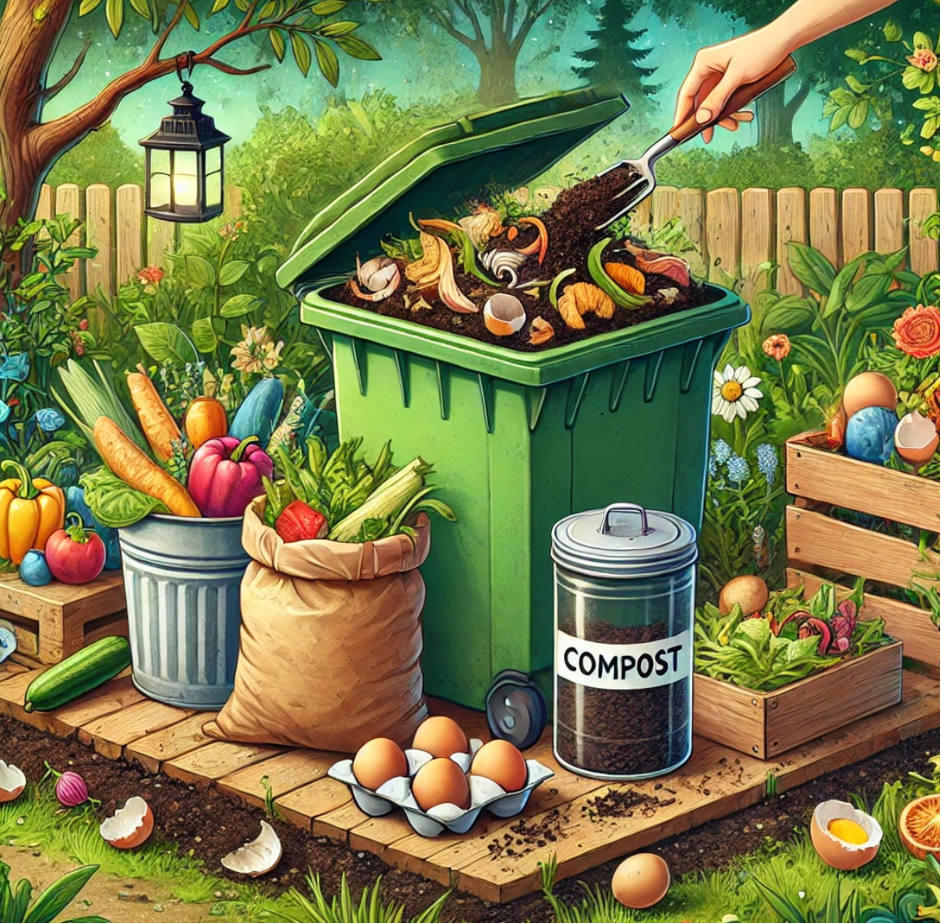
Composting is a cornerstone of regenerative gardening, as it turns organic waste into nutrient-rich compost that improves soil health. By composting kitchen scraps, yard waste, and other organic materials, you reduce landfill waste and create a valuable resource for your garden.
How to Start Composting:
- Collect organic waste: Set aside food scraps like fruit peels, vegetable trimmings, coffee grounds, and eggshells for your compost bin. Avoid adding meat, dairy, or oily foods.
- Add yard waste: Leaves, grass clippings, and small branches can all be added to your compost pile.
- Turn the pile: Aerate your compost regularly by turning it to speed up the decomposition process.
6. Integrated Pest Management (IPM)
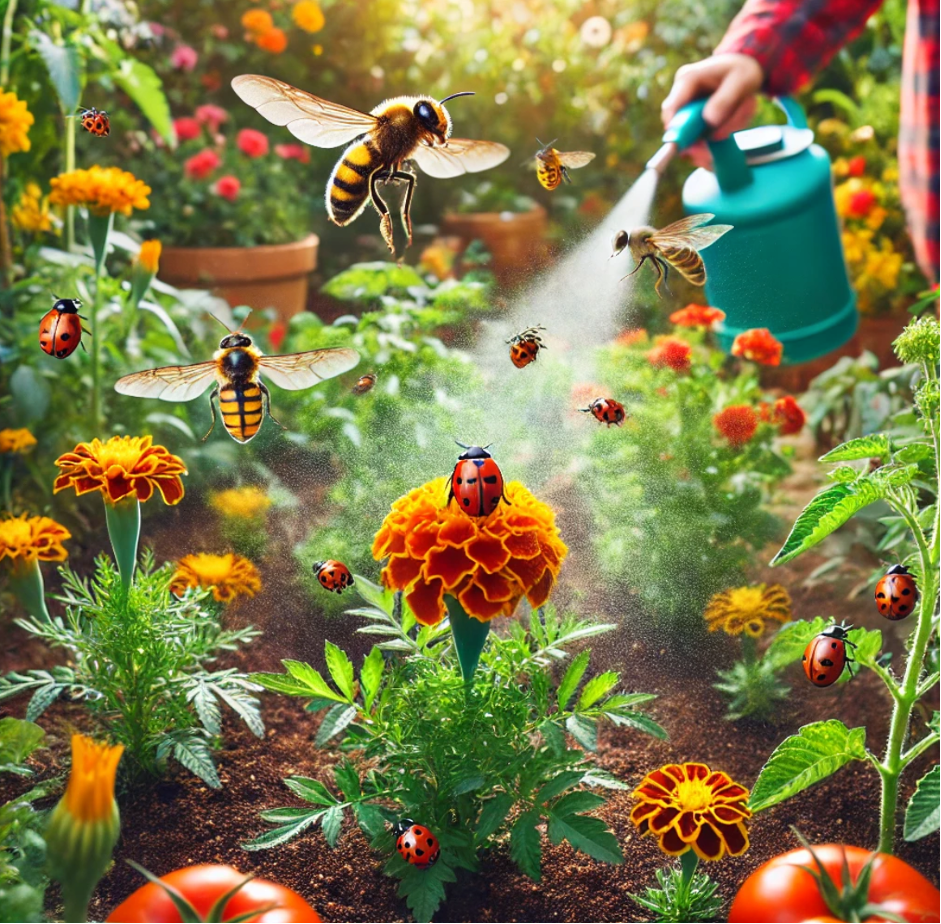
Regenerative gardening minimizes the use of synthetic pesticides by encouraging natural pest control methods. Integrated Pest Management (IPM) focuses on maintaining a healthy balance between pests and beneficial organisms, reducing the need for chemical interventions.
IPM Strategies:
- Encourage beneficial insects: Plant flowers that attract pollinators and natural predators like ladybugs and parasitic wasps.
- Use organic pest controls: If pests become a problem, opt for organic solutions like neem oil, diatomaceous earth, or homemade insecticidal soap.
- Practice crop rotation: Rotating crops each year helps prevent pest and disease buildup in the soil.
7. Seed Saving and Heirloom Varieties
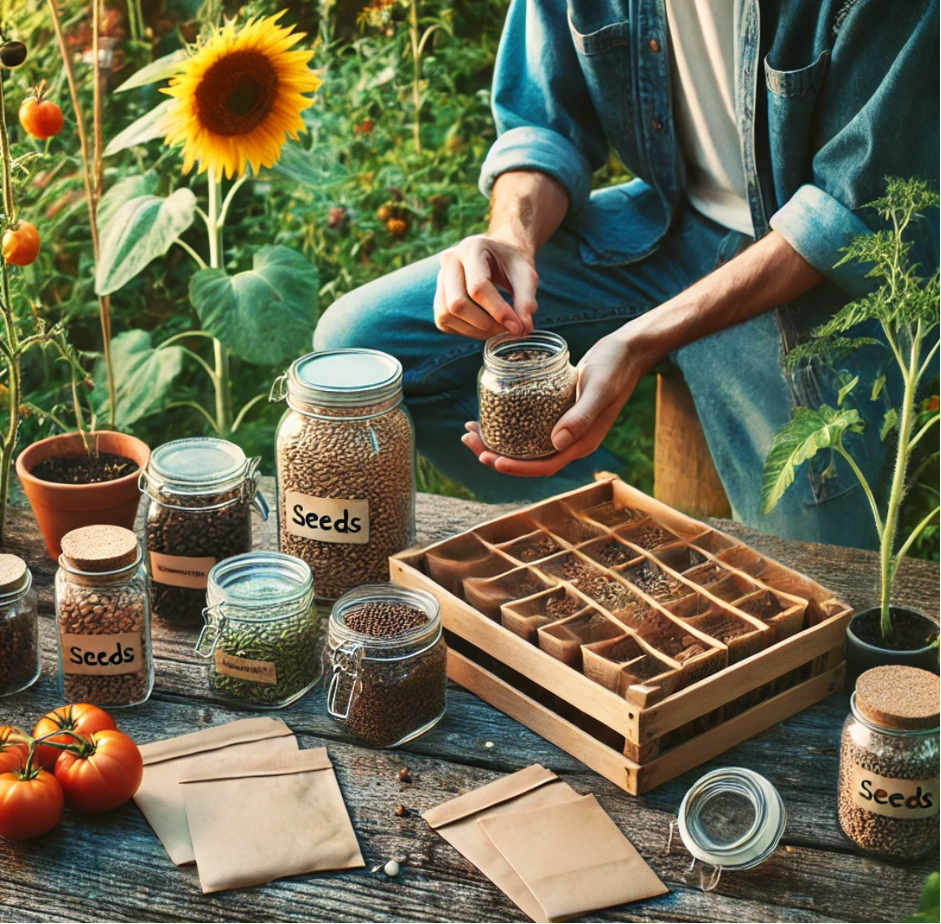
Saving seeds from your garden is a sustainable practice that allows you to grow plants that are better adapted to your local environment. Heirloom seeds, in particular, are valuable because they preserve plant varieties that may be more resilient and flavorful than modern hybrids.
Seed Saving Tips:
- Harvest seeds from healthy plants: Collect seeds from your healthiest, most productive plants to ensure strong offspring.
- Store seeds properly: Keep seeds in a cool, dry place in airtight containers to maintain their viability for future planting.
Building a Sustainable Ecosystem in Your Backyard
Regenerative gardening isn’t just about growing plants—it’s about creating a self-sustaining ecosystem in your backyard that supports the health of the environment. By improving soil health, encouraging biodiversity, conserving water, and minimizing chemical use, you’re contributing to the long-term sustainability of your garden and the planet.
The benefits of regenerative gardening extend beyond your own backyard. By adopting these practices, you’re helping to restore ecosystems, mitigate climate change, and create a healthier future for generations to come.

